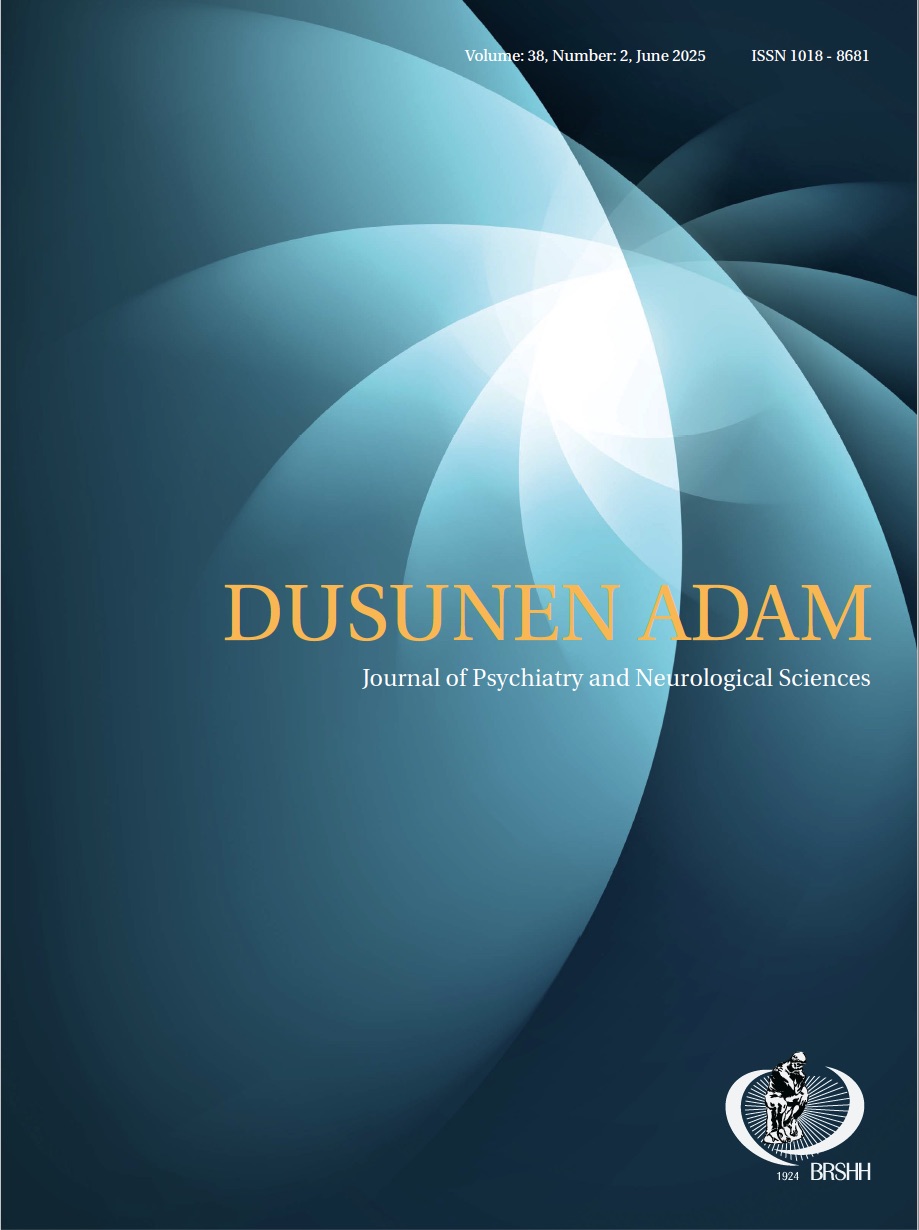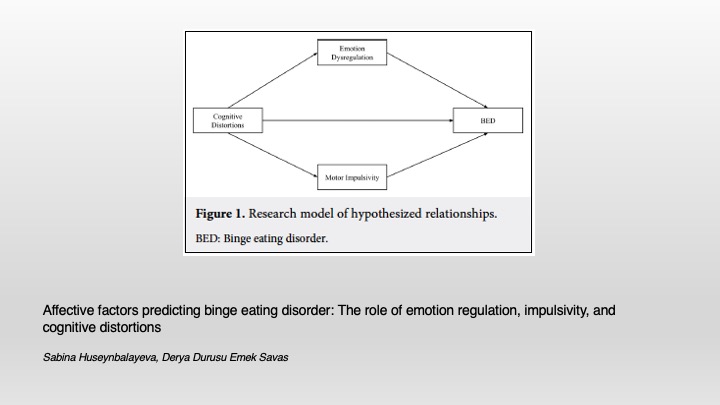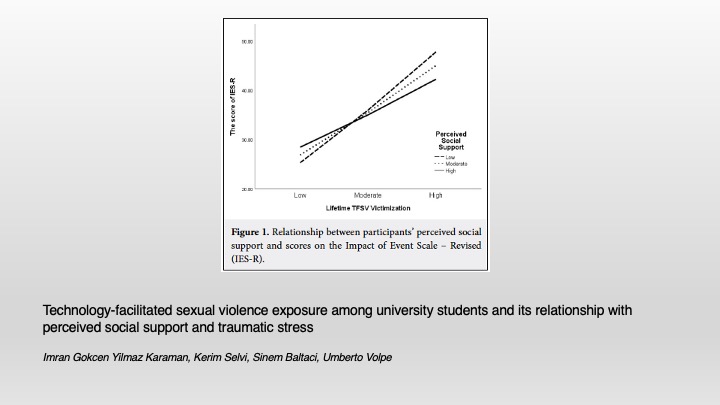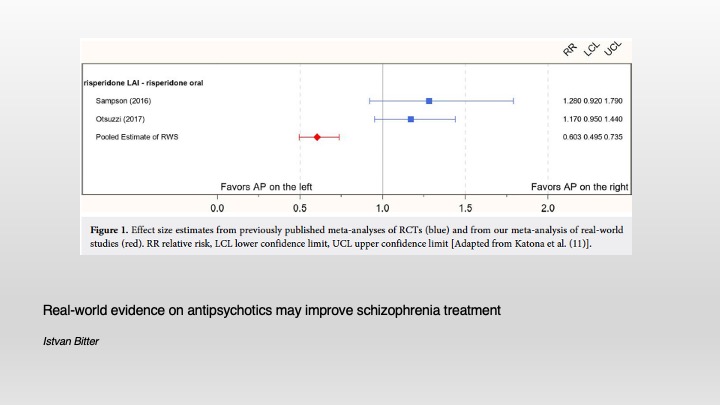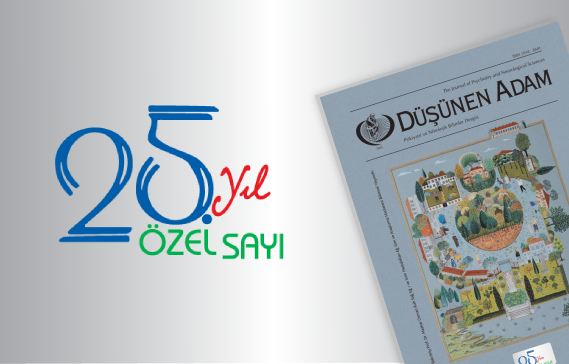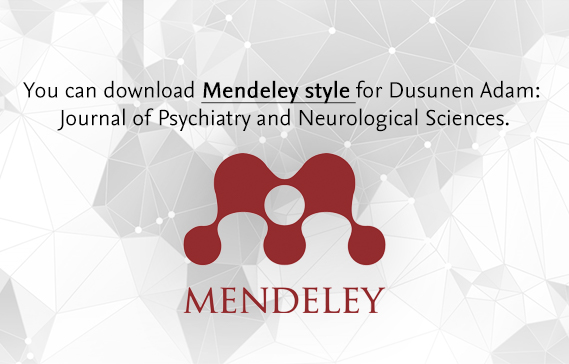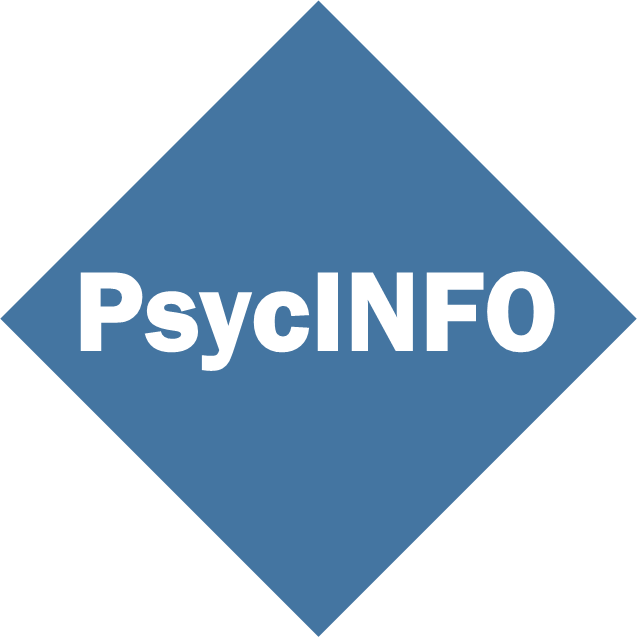2Assist. Prof. Dr., Çanakkale Onsekiz Mart University Faculty of Medicine, Department of Psychiatry, Çanakkale - Turkey
3Psychiatrist,
4Assoc. Prof. Dr., Bakırköy Prof. Dr. Mazhar Osman Research and Training Hospital for Psychiatry, Raşit Tahsin Center for Mood Disorders, İstanbul - Turkey
Abstract
Objective: Antidepressants are thought to cause manic switches and accelerate cycling in the treatment of bipolar depression. On the other hand, other evidence suggests that antidepressant neither cause manic switches, nor are effective for the treatment of bipolar depression. This study aimed to assess clinicians’ attitudes towards antidepressant choices for treatment of bipolar depressive episodes and subthreshold depression.
Methods: Medical records of 784 patients with bipolar disorder were investigated retrospectively. Antidepressants were used in 55 of 263 depressive episodes (20.9%). Data regarding 78 episodes (23 subthreshold symptoms, 55 episodes) of 68 patients (54 female, 14 male; mean age: 39.64±10.99) were obtained. Descriptive statistics were the evaluation method.
Results: In our department, antidepressants were used in 20.9% of the patients in the treatment of bipolar depression. One third of patients receiving antidepressant prescriptions had a history of manic switch, 5 (21.7%) of the patients with subthreshold symptoms receiving antidepressant prescriptions had a history of manic switch. However, manic switch occurred in only 5 (6.4%) patients. Selective serotonin reuptake inhibitors were the most common cause (58.3%) of the manic switch in patients with a history of manic switch.
Discussion: Clinicians are still using antidepressants in the treatment of bipolar depression. Antidepressants targeting many neurotransmitter systems can be used in the first line treatments and antidepressants can be used even in patients with a history of manic switch. This controversial topic should be studied prospectively with larger samples and it must be clarified whether this phenomenon is a natural course of the disorder or triggered by antidepressant medications.
INTRODUCTION
Although antidepressant use in bipolar disorder is debatable, it is being used for different reasons. Ghaemi et al. (1) reported that 80% of patients use antidepressants in some period of their lives after being diagnosed as bipolar disorder; however, only 50% reported using mood stabilizers (MS). It was also suggested that using antidepressants in bipolar depression may lead to manic switches and rapid cycling and may become ineffective in treatment (2,3). In the systematic review of Gijsman et al. (4) published in 2004, only 24% of patients with depression adequately responded to antidepressants. In a randomized controlled study, patients using only MS and using antidepressants in addition to MS were compared and it was shown that antidepressants do not provide any advantage in bipolar depressive periods (3).
Although it was suggested that level of evidence on this issue is not adequate (5-9), the idea that antidepressants cause more harm than benefit in bipolar depression is widely being accepted (10,11). According to Bipolar Disorder Treatment Guideline issued by Turkish Psychiatry Association (TPA) in 2010 (5), MS should be used in mild and moderately severe depressive episodes and conventional antipsychotics should be avoided, antidepressants can also be used by evaluating the risks. Moreover, it was also suggested that antidepressants involving multiple neurotransmitter systems (i.e., serotonergic and noradrenergic) should be avoided at the first instance.
On the other hand, patients spend nearly 3 times more time in depressive periods than manic periods (12) and depression is considered as a stronger predictor of poor course of illness. (13). Similarly, chronic subthreshold depressive symptoms were suggested to be strong predictors of functional impairment (14,15). Judd et al. (13) reported that approximately half of type 1 bipolar patients experience a symptom during longitudinal follow-up (mean 12.8 years of weekly follow-up) and 90% of them experience depressive symptoms for at least one week. More than 10% of patients attempt suicide during their depressive episodes (16).
In conclusion, depressive episodes are more encountered than manic episodes during disease course and treatment options are limited for bipolar depression. Treatment options borrowed from unipolar depression are used in treatment of bipolar depression (7). In our study, we aimed to investigate approaches of clinicians in bipolar depression and to evaluate characteristics of treatment with antidepressants in subthreshold (ST) and suprathreshold (SPT) depressive symptoms.
METHODS
Clinical records of 784 patients who are being followed-up for bipolar disorder at Bakırköy Prof. Dr. Mazhar Osman Research and Training Hospital for Psychiatry, Neurology and Neurosurgery, Raşit Tahsin Mood Clinic were retrospectively analyzed. Two hundred and sixty-three depressive episodes were examined; it was found that antidepressants were added to the treatment at 55 of these episodes. Moreover, antidepressants were initiated to 23 patients with ST depressive symptoms. Findings from 78 episodes (23 ST and 55 depressive episodes) from 68 patients whom antidepressants were added to the treatment of ST and SPT depressive symptoms were extracted from an original data form (SKIP-TURK)(17) and hospital records. ST and SPT episodes which have at least two symptoms but do not meet DSM-IV bipolar depression diagnostic criteria were included in the study. Data were analyzed by SPSS (16.0) software and with descriptive statistical methods.
RESULTS
Fifty-four patients (79.4%) were women and 14 patients (20.6%) were men. All patients were being followed-up for type 1 bipolar disorder. Mean disease duration was 17 years (SD= ±9.4) and mean age of disease onset was 24.7 years (SD= ±9.38). Mean age of patients was 39.64 (SD= ±10.99). Fifty-five depressive and and 23 ST episodes were assessed out of 263 depressive episodes of total 784 patients. It was observed that antidepressant medications were administered to 20.9% of patients (n=55) at depressive episode. Clinicians were found to add antidepressants at 23 ST depressive episodes which do not meet DSM-IV depressive episode criteria having at least two depressive symptoms. Patients were followed-up by different physicians and different groups of antidepressants were selected. Antidepressant initiation rates of different clinicians are shown in table 1 (Table 1).
History of manic switch was detected in 33.3% (n=24) of patients who were started on antidepressants in ST and SPT depressive episodes. In patients with a history of manic switch, was shown in table 2. The antidepressant group causing manic switch most frequently was serotonin reuptake inhibitors (SSRI) with 58.3% (n=14) (Table 2).
Manic switches were detected in 6.4% (n=5) of ST and SPT episodes when antidepressants were started and antidepressant treatments were terminated for this reason. Data from 2 of 23 ST episodes could not be accessed. While mood stabilizers (MS) were being used in 42.8% (n=9) of 21 ST episodes, antidepressant treatment was started without looking at serum levels. It was observed that antidepressant treatment was started in 21.7% (n=5) of psychiatric conditions with ST depressive symptoms despite history of manic shift (Table 3).
DISCUSSION
In our study, we found that antidepressants are still being preferred by clinicians in treatment of bipolar depression; they are being used even with history of manic shift, and antidepressants effective on multiple neurotransmitter systems can be used as first line treatment. In spite of this, frequency of manic switch during antidepressant use was found 6.4%. Although adjusting MS dose after examining the serum level (though not being used routinely) and adding antidepressants in case of unrelieved episode was recommended in TPA guideline (5), it was found that antidepressants were started without looking at MS serum levels in 42.8% of patients (21 patients) in whom ST depressive symptoms were detected.
In STEP-BD (Systematic Treatment Enhancement Program for Bipolar Disorder) study done in US, prescriptions from several clinics were examined and an antidepressant was detected in 50% of these prescriptions (11) and this rate was found to be quite similar with lithium and valproate prescription rates (40-60%) (18,19). In another database-based study with wide sample size, it was found that 50% of bipolar patients were using antidepressants (20). Antidepressant use in treatment of bipolar depression was found as 72% in primary care centers in US (21). This rate was found 15-20% in academic centers (22,23). In our study, antidepressant preference was found 20.9% in our center. This rate is under average and close to other academic centers.
In bipolar disorder, ST symptoms particularly observed after episodes were reported to be good predictors of relapses (24,25). Moreover, ST symptoms are important due to their substantial effect on functionality (26). For this reason, their effective treatment is important. There are contradictory results with consequences of antidepressant treatment. There are studies showing that antidepressants are either effective (23,27) or may cause manic switches (11,28). However, there are studies reporting that antidepressants are ineffective and do not cause manic switches (3,7,29).
Goldberg et al. reported that chance of antidepressants causing manic switch is not different from placebo even in patients with history of manic switch or ST manic symptoms (30,31). In our sample, although there is a history of manic switch while using antidepressants, manic shwitch frequency was found only 6.4% during antidepressant use. For this reason, detailed information has to be obtained by follow-up studies having wider sample size and it has to be determined that whether this phenomenon occur due to direct effects of antidepressants or natural course of the illness.
In our study, evaluating antidepressant preference rates of physicians in the treatment of bipolar depression was aimed and previous manic switch occurrence in these patients while using antidepressants was examined for this purpose. However, total number of patients having ST symptoms could not be determined. On the other hand, determining other medications used by patients using antidepressants and its relationship with manic switch is required. Our study was done by retrospective record scan. Evaluating bipolar patients using antidepressants by follow-up studies may provide further information about effects of antidepressants on illness course.
CONCLUSION
There is insufficient data about efficacy of antidepressants in the literature despite their widespread use. As a matter of fact FDA (Food and Drug Administration) has not approved any antidepressant in the treatment of bipolar depression yet. Another issue of debate about antidepressant use in depressive episode of bipolar disorder is manic switch. Although different findings have been obtained about this switch in different studies, relationship between manic switch and antidepressants has not been clear yet. On the other hand, there is not adequate evidence whether antidepressants are effective or not. For this reason, we suggest that it is better to choose antidepressants for ST and SPT depressive symptoms in treatment of bipolar disorder after trial of other evidence-based treatment options and MS medications should be used effectively for first–line treatment.
REFERENCES
1. Ghaemi SN, Boiman EE, Goodwin FK. Diagnosing bipolar disorder and the effect of antidepressants: a naturalistic study. J Clin Psychiatry 2000; 61:804-808.
2. Hirschfeld RMA, Bowden CL, Gitlin MJ, Keck PE, Perlis RH, Suppes T, Thase ME, Wagner KD. Practice guidelines for the treatment of patients with bipolar disorder (revision). Focus 2003; 1:64-110.
3. Sachs GS, Nierenberg AA, Calabrese JR, Marangell LB, Wisniewski SR, Gyulai L, Friedman ES, Bowden CL, Fossey MD, Ostacher MJ, Ketter TA, Patel J, Hauser P, Rapport D, Martinez JM, Allen MH, Miklowitz MJ, Otto MW, Dennehy EB, Thase ME. Effectiveness of adjunctive antidepressant treatment for bipolar depression. N Engl J Med 2007; 356:1711-1722.
4. Gijsman HJ, Geddes JR, Rendell JM, Nolen WA, Goodwin GM. Antidepressants for bipolar depression: a systematic review of randomized, controlled trials. Am J Psychiatry 2004; 161:1537-1547.
5. Aydemir Ö, Uluşahin A, Akdeniz F (editörler). İki Uçlu Bozukluk Sağaltım Kılavuzu. 1. Baskı. Ankara: Türkiye Psikiyatri Derneği Yayınları, 2010, 43-62. (Treatment Guideline in Turkish)
6. Goodwin GM, Anderson I, Arango C, Bowden CL, Henry C, Mitchell PB, Nolen WA, Vieta E, Wittchen HU. ECNP consensus meeting. Bipolar depression. Nice, March 2007. Eur Neuropsychopharmacol 2008; 18:535-549.
7. Altınbaş K, Oral ET, Smith DJ, Craddock N. Comparing the effectiveness of mood stabilizers and antidepressants for bipolar depression treatment. Düşünen Adam The Journal of Psychiatry and Neurological Sciences 2010; 23:115-120.
8. Calabrese JR, Kasper S, Johnson G, Tajima O, Vieta E, Yatham LN, Young AH. International Consensus Group on Bipolar I Depression Treatment Guidelines. J Clin Psychiatry 2004; 65:571-579.
9. Frye MA, Helleman G, McElroy SL, Altshuler LL, Black DO, Keck PE Jr, Nolen WA, Kupka R, Leverich GS, Grunze H, Mintz J, Post RM, Suppes T. Correlates of treatment-emergent mania associated with antidepressant treatment in bipolar depression. Am J Psychiatry 2009; 166:164-172.
10. Ghaemi SN, Pope HG. Lack of insight in psychotic and affective disorders: a review of empirical studies. Harv Rev Psychiatry 1994; 2:22-33.
11. Ghaemi SN, Hsu DJ, Thase ME, Wisniewski SR, Nierenberg AA, Miyahara S, Sachs G. Pharmacological treatment patterns at study entry for the first 500 STEP-BD participants. Psychiatr Serv 2006; 57:660-665.
12. Post RM, Denicoff KD, Leverich GS, Altshuler LL, Frye MA, Suppes TM, Keck, Jr PE, McElroy SL, Kupka R, Nolen WA, Grunze H, Walden J. Presentations of depression in bipolar illness. Clin Neurosci Res 2002; 2:142-157.
13. Judd LL, Akiskal HS, Schettler PJ, Endicott J, Maser J, Solomon DA, Leon AC, Rice JA, Keller MB. The long-term natural history of the weekly symptomatic status of bipolar I disorder. Arch Gen Psychiatry 2002; 59:530-537.
14. MacQueen GM, Young LT, Robb JC, Marriott M, Cooke RG, Joffe RT. Effect of number of episodes on wellbeing and functioning of patients with bipolar disorder. Acta Psychiatr Scand 2000; 101:374-381.
15. Akiskal HS, Maser JD, Zeller PJ, Endicott J, Coryell W, Keller M, Warshaw M, Clayton P, Goodwin F. Switching from ‘unipolar’ to bipolar II. An 11-year prospective study of clinical and temperamental predictors in 559 patients. Arch Gen Psychiatry 1995; 52:114-23.
16. Oral ET, Vahip S. Bipolar depression: an overview. Drugs 2004; 7:846-850.
17. Ozerdem A, Yazıcı O, Oral ET, Tunca Z, Vahip S, Kurt E, The Mood Disorders Study Group Psychiatric Association of Turkey. Establishment of a registry program for bipolar illness in Turkey. International Society of Affective Disorders 2nd Biennial Conference- Cancun, Mexico. J Affect Disord 2004; 78 (Suppl.1):86.
18. Blanco C, Laje G, Olfson M, Marcus SC, Pincus HA. Trends in the treatment of bipolar disorder by outpatient psychiatrists. Am J Psychiatry 2002; 159:1005-1010.
19. Levine J, Chengappa KN, Brar JS, Gershon S, Kupfer DJ. Illness characteristics and their association with prescription patterns for bipolar I disorder. Bipolar Disord 2001; 3:41-49.
20. Baldessarini RJ, Leahy L, Arcona S, Gause D, Zhang W, Hennen J. Patterns of psychotropic drug prescription for US patients with diagnoses of bipolar disorders. Psychiatr Serv 2007; 58:85-91.
21. Russo P, Smith MW, Dirani R, Namjoshi M, Tohen M. Pharmacotherapy patterns in the treatment of bipolar disorder. Bipolar Disord 2002; 4:366-377.
22. Ghaemi SN, Goodwin FK. Long-term naturalistic treatment of depressive symptoms in bipolar illness with divalproex vs. lithium in the setting of minimal antidepressant use. J Affect Disord 2001; 65:281-287.
23. Altshuler L, Suppes T, Black D, Nolen WA, Keck PE Jr, Frye MA, McElroy S, Kupka R, Grunze H, Walden J, Leverich G, Denicoff K, Luckenbaugh D, Post R. Impact of antidepressant discontinuation after acute bipolar depression remission on rates of depressive relapse at 1-year follow-up. Am J Psychiatry 2003; 160:1252-1262.
24. Perlis RH, Ostacher MJ, Patel JK, Marangell LB, Zhang H, Wisniewski SR, Ketter TA, Miklowitz DJ, Otto MW, Gyulai L, Reilly-Harrington NA, Nierenberg AA, Sachs GS, Thase ME. Predictors of recurrence in bipolar disorder: primary outcomes from the Systematic Treatment Enhancement Program for Bipolar Disorder (STEP-BD). Am J Psychiatry 2006; 163:217-224.
25. Judd LL, Schettler PJ, Akiskal HS, Coryell W, Leon AC, Maser JD, Solomon DA. Residual symptom recovery from major affective episodes in bipolar disorders and rapid episode relapse/recurrence. Arch Gen Psychiatry 2008; 65:386-394.
26. Marangell LB, Dennehy EB, Miyahara S, Wisniewski SR, Bauer MS, Rapaport MH, Allen MH. The functional impact of subsyndromal depressive symptoms in bipolar disorder: data from STEP-BD. J Affect Disord 2009; 114:58-67.
27. Joffe TR, MacQueen GM, Marriott M, Young LT. One-year outcome with antidepressant–treatment of bipolar depression. Acta Psychiatr Scand 2005; 112:105-109.
28. Leverich GS, Altshuler LL, Frye MA, Suppes T, McElroy SL, Keck PE Jr, Kupka RW, Denicoff KD, Nolen WA, Grunze H, Martinez MI, Post RM. Risk of switch in mood polarity to hypomania or mania in patients with bipolar depression during acute and continuation trials of venlafaxine, sertraline, and bupropion as adjuncts to mood stabilizers. Am J Psychiatry 2006; 163:232-239.
29. Nemeroff CB, Evans DL, Gyulai L, Sachs GS, Bowden CL, Gergel IP, Oakes R, Pitts CD. Double-blind, placebo-controlled comparison of imipramine and paroxetine in the treatment of bipolar depression. Am J Psychiatry 2001; 158:906-912.
30. Goldberg JF, Perlis RH, Ghaemi SN, Calabrese JR, Bowden CL, Wisniewski S, Miklowitz DJ, Sachs GS, Thase ME. Adjunctive antidepressant use and symptomatic recovery among bipolar depressed patients with concomitant manic symptoms: findings from the STEP- BD. Am J Psychiatry 2007; 164:1348-1355.
31. Goldberg JF, Perlis RH, Bowden CL, Thase ME, Miklowitz DJ, Marangell LB, Calabrese JR, Nierenberg AA, Sachs GS. Manic symptoms during depressive episodes in 1,380 patients with bipolar disorder: findings from the STEP-BD. Am J Psychiatry 2009; 166:173-181.
2Yrd.Doç. Dr., Çanakkale Onsekiz Mart Üniversitesi Tıp Fakültesi, Psikiyatri Anabilim Dalı, Çanakkale - Türkiye
3Psikiyatrist,
4Doç. Dr., Bakırköy Prof. Dr. Mazhar Osman Psikiyatri Araştırma ve Eğitim Hastanesi, Raşit Tahsin Duygudurum Bozuklukları Merkezi, İstanbul - Türkiye
Amaç: Antidepresanların iki uçlu depresyonda manik kaymalara ve döngü hızlanmasına neden olabilecekleri düşünülmektedir. Diğer taraftan, antidepresanların manik kaymaya neden olmadıklarını, ama etkili de olmadıklarını gösteren araştırmalar bulunmaktadır. Bu araştırmada, uygulamada, klinisyenlerin iki uçlu depresyon tedavisinde antidepresan tercihlerinin ve antidepresan kullanımının sonuçlarının incelenmesi amaçlanmıştır.
Yöntem: İki uçlu bozukluk tanısıyla izlenmekte olan 784 hastanın klinik kayıtları, geriye dönük incelendi. 263 depresif dönemin 55’inde (%20.9) antidepresan başlandığı belirlendi. Eşik altı (EA) ve eşik üstü (EÜ) depresif belirtilerin tedavisinde antidepresan eklenen 68 hastaya ait (54 kadın, 14 erkek; ortalama yaş: 39.64±10.99), 78 depresif döneme (23 EA, 55 depresif dönem) ilişkin bulgular kaydedildi. Veriler tanımlayıcı istatistik yöntemlerle değerlendirildi.
Bulgular: Merkezimizde depresif dönemleri olan hastalara antidepresan başlama oranı %20.9 olarak saptandı. Antidepresan başlanan hastaların üçte birinde, daha önce antidepresan kullanırken manik kayma öykülerinin bulunduğu, eşik altı belirtileri olan hastaların 5’inde (%21.7) daha evvel manik kayma öyküsü olduğu halde, antidepresan başlandığı gözlendi. Buna rağmen, araştırmamız dahilinde sadece 5 hastada (%6.4) manik kayma belirlendi. Manik kayma öyküsü olan hastalarda kaymaya en sık neden olmuş antidepresan grubu, %58.3 oranıyla seçici serotonin geri alım inhibitörleriydi.
Tartışma: İki uçlu depresyon tedavisinde antidepresanlar, klinisyenlerce tercih edilebilmektedir. Antidepresanlar manik kayma öyküsü olan hastalarda dahi kullanılabilmekte ve çoklu nörotransmiter sistemler üzerinden etkili antidepresanlar da ilk seçenek olarak kullanılabilmektedir. Yapılacak büyük örneklemli izlem çalışmaları ile ayrıntılı bilgi edinilmeli ve antidepresanların doğrudan etkileriyle mi, yoksa hastalığın doğal seyri nedeniyle mi bu görüngünün ortaya çıktığı belirlenmelidir.

